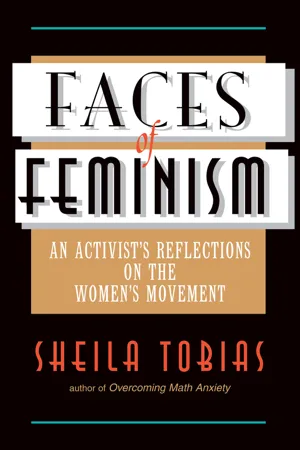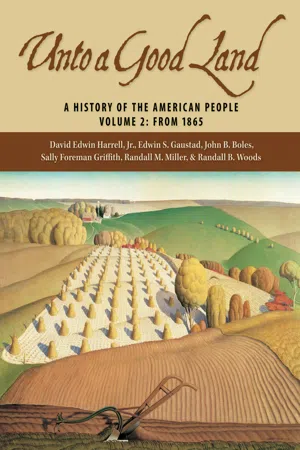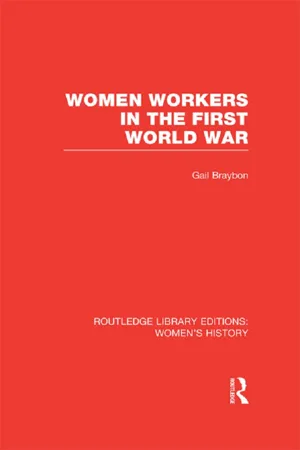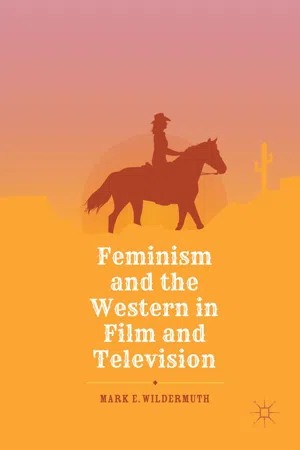History
Women of 1920s
In the 1920s, women experienced significant social and cultural changes, often referred to as the "Roaring Twenties." This era saw the rise of the flapper, a symbol of women's newfound independence and liberation. Women's roles expanded beyond the domestic sphere, with increasing participation in the workforce and the fight for suffrage, marking a transformative period in women's history.
Written by Perlego with AI-assistance
Related key terms
4 Key excerpts on "Women of 1920s"
- eBook - ePub
Faces Of Feminism
An Activist's Reflections On The Women's Movement
- Sheila Tobias(Author)
- 2018(Publication Date)
- Routledge(Publisher)
20 What the NWP well understood and what social reformers pursuing individual women-friendly legislation did not is that legislative statutes can always be overturned by later statutes. If a floor of women's rights were to be enacted, it would have to take the form of a constitutional amendment.But the 1920s were not favorable to sweeping equal rights legislation of any kind. Although World War I (like World War II) was presented to the American people as a way to extend freedom and democracy to the world's peoples, that war brought in its wake political backsliding and repression. Partly in response to the 1917 communist revolution in Russia (by 1923 the Union of Soviet Socialist Republics, the world's first all communist state, had been established in Russia), partly because of a natural swing of the political pendulum, 1920s America turned to the right, and the movements that had been friendly to the feminists' cause also suffered decline. In many ways, the 1920s were like the 1980s, with "get rich quick" replacing social activism. And when the "bubble" burst with the stock market crash in 1929, the nation was too paralyzed to worry about women's rights.Paranoia about Soviet communism played a major role in setting back women's emancipation. Typical was the publication in 1924 of a "spider web chart" purportedly originating with the Department of War (later the Department of Defense). The chart showed a malevolent spider (Communist Russia) infiltrating progressive organizations in America. In an accompanying article entitled 'Are Women's Clubs 'Used' by Bolsheviks?" the text suggested that under the "generalship of avowed socialist Florence Kelley," the Soviets were using such fronts as the Children's Bureau to advance the purposes of the Kremlin. A month later the WJCC complained to Secretary of War John Wingate Weeks and threatened reprisals from 12 million women. Weeks admitted the chart had errors, insisted the librarian had not published it in her official capacity, and ordered all copies destroyed.21 - eBook - ePub
Unto a Good Land
A History of the American People, Volume 2: From 1865
- David Edwin Harrell, Edwin S. Gaustad, John B. Boles, Sally Foreman Griffith(Authors)
- 2005(Publication Date)
- Eerdmans(Publisher)
Women led the dramatic change in lifestyle in the twenties. The availability of consumer goods helped emancipate women from the drudgery of housework. The automobile was an ideal laboratory for sexual experimentation, and in it one could escape the community-enforced moral code of the small town. Perhaps most important, the dissemination of information about birth control, promoted vigorously by Margaret Sanger, somewhat undermined the pillar of the double standard of morality, woman’s fear of pregnancy. Birth control gave women new sexual freedom and also contributed to a declining national birth rate and the lengthening of women’s life expectancy.The intellectual oracle of the new morality was Sigmund Freud. To be sure, few Americans really understood Freud, but psychoanalysis encouraged uninhibited discussions of sex that would have been unthinkable a decade earlier. At the popular level, the lesson read into Freud was the urgency of escaping from sexual repressions.To some extent, the changing role of women was tied to the perception that women had become financially less dependent on their husbands. Actually, women made few economic gains during the decade. They entered the workforce in unprecedented numbers during World War I, but most of them left again after the war. The image of the economically self-reliant working girl of the twenties is largely a myth. The total number of women in the labor force of the country rose from 8.3 million in 1920 to 10.6 million in 1930, but that represented a gain of less than one percentage point—to 23.6 percent of the total labor force. The number of married women working did increase significantly during the decade, from 23 percent of women workers to 28.9 percent. But most women continued to live in traditional families and to work in low-paying female occupations—nurses, teachers, secretaries, sales clerks, waitresses, and domestic servants. Women did make up a majority of those employed in the emerging field of social work, and many held leadership positions in the profession. - eBook - ePub
- Gail Braybon(Author)
- 2012(Publication Date)
- Routledge(Publisher)
8The Position of Women Workers in the Twenties
There are several ways in which one can view the effects of the First World War upon the position of women workers. Some would say that these years constituted a watershed in women’s history, and that the changes which occurred were drastic and far-reaching. Others would say that it led to few fundamental changes in the position of women in general, or of working-class women in particular. In fact, neither view is adequate. Society had not been ‘transformed’, yet many people had been changed by their war experiences, and certain aspects of industrial technology had been stimulated by the war’s requirements. In this brief look at the twenties I would like to set the war in context, and add something about the work women were offered during these years, together with some of the attitudes towards such work. This is no more than a postscript, and I have not ventured into the years of the Depression and the thirties, which belong to a different study.The entry of women into the professions, clerical work and the retail trade was almost certainly encouraged by their work in these jobs during the war, and a number of employers were happy to recruit women in these expanding fields during the twenties. For young middle-class women, employment opportunities were improving, but the position of working-class women was quite different. In 1924, the Ministry of Labour Gazette reviewed the current Report of the Factory Inspectorate:With reference to the general condition of women’s employment the Report states that the reversal of the process of substitution which was so striking a feature of war-time industry is now practically complete. Women have returned to women’s industries, and very few of them are to be found even in those sections of men’s trades for which war-time observation and experience showed them to be peculiarly well-fitted.1 - eBook - ePub
- Mark E. Wildermuth(Author)
- 2018(Publication Date)
- Palgrave Macmillan(Publisher)
As we will see in subsequent chapters, there is a great deal of evidence to support what she describes. Nevertheless, with the rise of the security regime in World War II, the conditions were quite complex and require close examination if we are to understand the Westerns of the period. For if the rhetoric of sexism emerged powerfully in later security states, the conditions of World War II actually promoted the movement of women from the domestic to the public spheres. This is because in an age of industrialized warfare, women could not be excluded from the war effort. Their efforts were needed in both the home fronts and in the staging areas of the war; even fascist regimes like Nazi Germany and Imperial Japan were forced to recruit women for labor and to serve in uniform during the war. America was no exception, and the changes in the lives of women both during and shortly after the war in the 1940s would lay the groundwork for the ideological revolution of emergent feminism in the 1960s and beyond. William Henry Chafe ’s study The American Woman: Her Changing Social, Economic, and Political Roles, 1920–1970 (1975) nicely attests to the changing roles of women at this time. At the beginning of the war, the conditions of the 1930s still prevailed: “In 1940 the percentage of females at work was almost exactly what it had been in 1910, and there seemed little reason to expect any change in the future” (135). But with the coming of the war, “the size of the female labor force [increased] by over fifty per cent.” Indeed: Wages leaped upward, the number of wives holding jobs doubled, and the unionization of women grew fourfold. Most important, public attitudes appeared to change. Instead of frowning on women who worked, government and the media embarked on an all-out effort to encourage them to enter the labor force
Learn about this page
Index pages curate the most relevant extracts from our library of academic textbooks. They’ve been created using an in-house natural language model (NLM), each adding context and meaning to key research topics.



